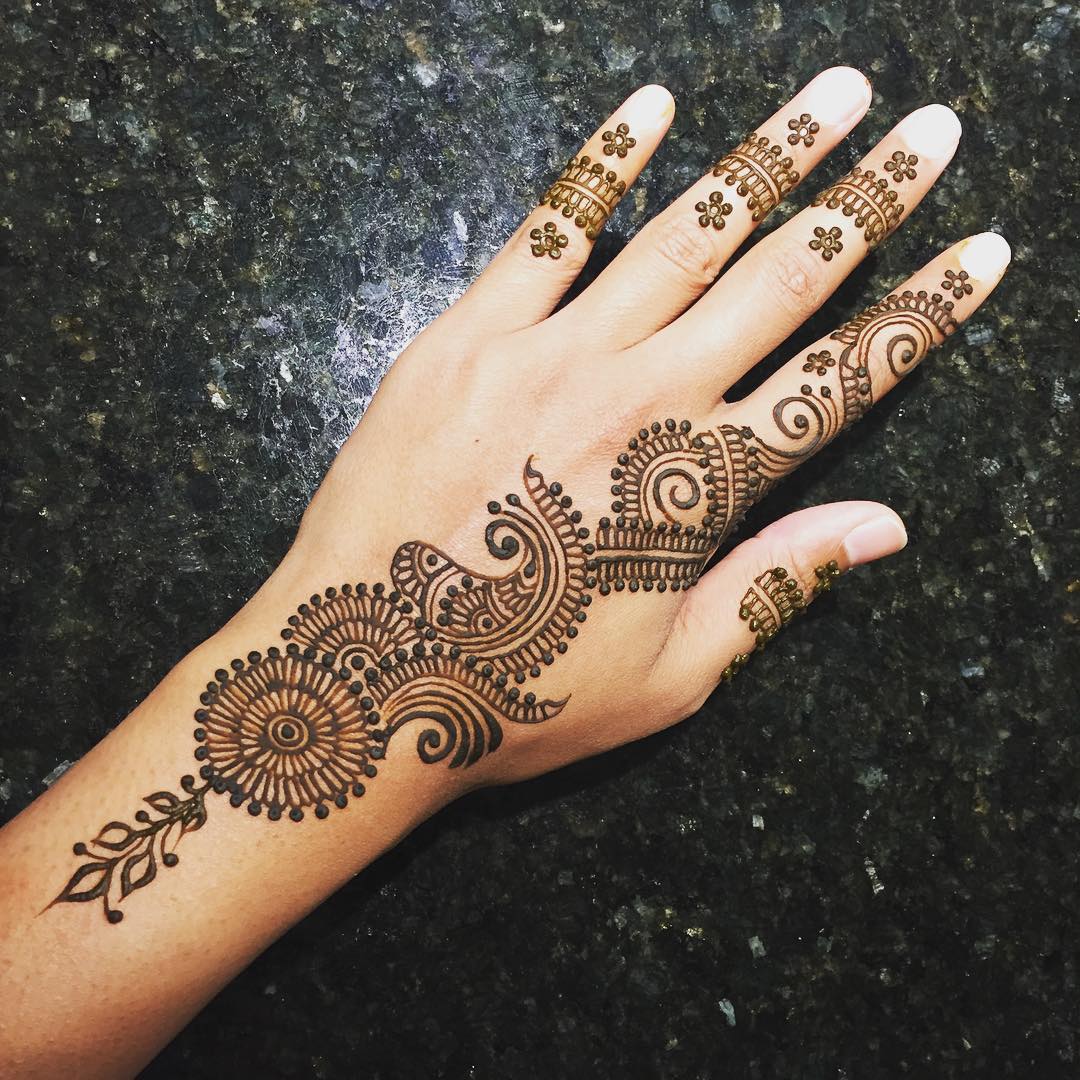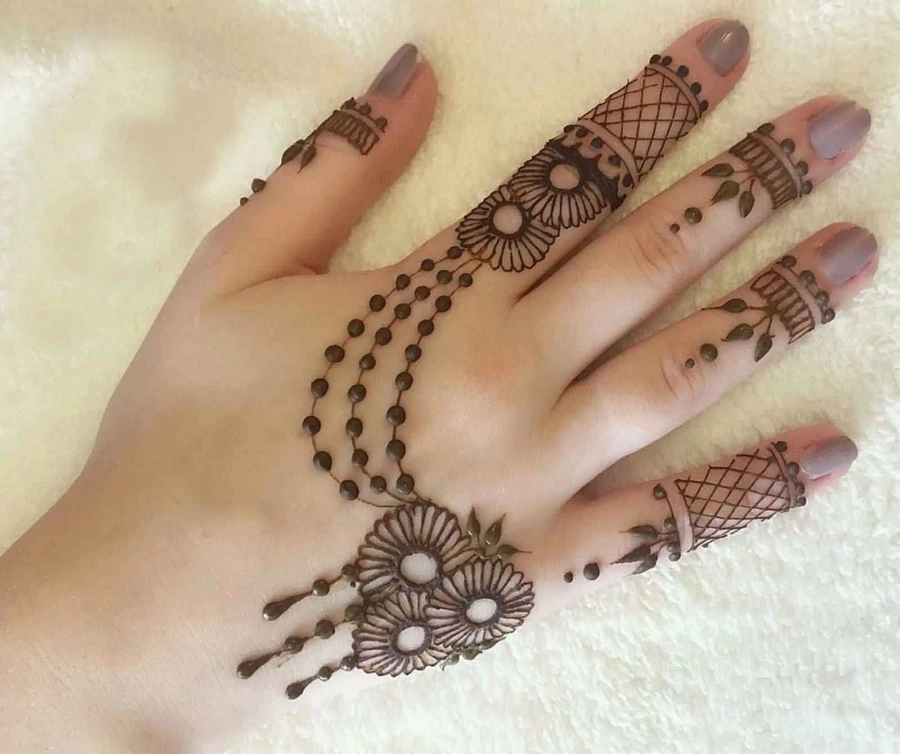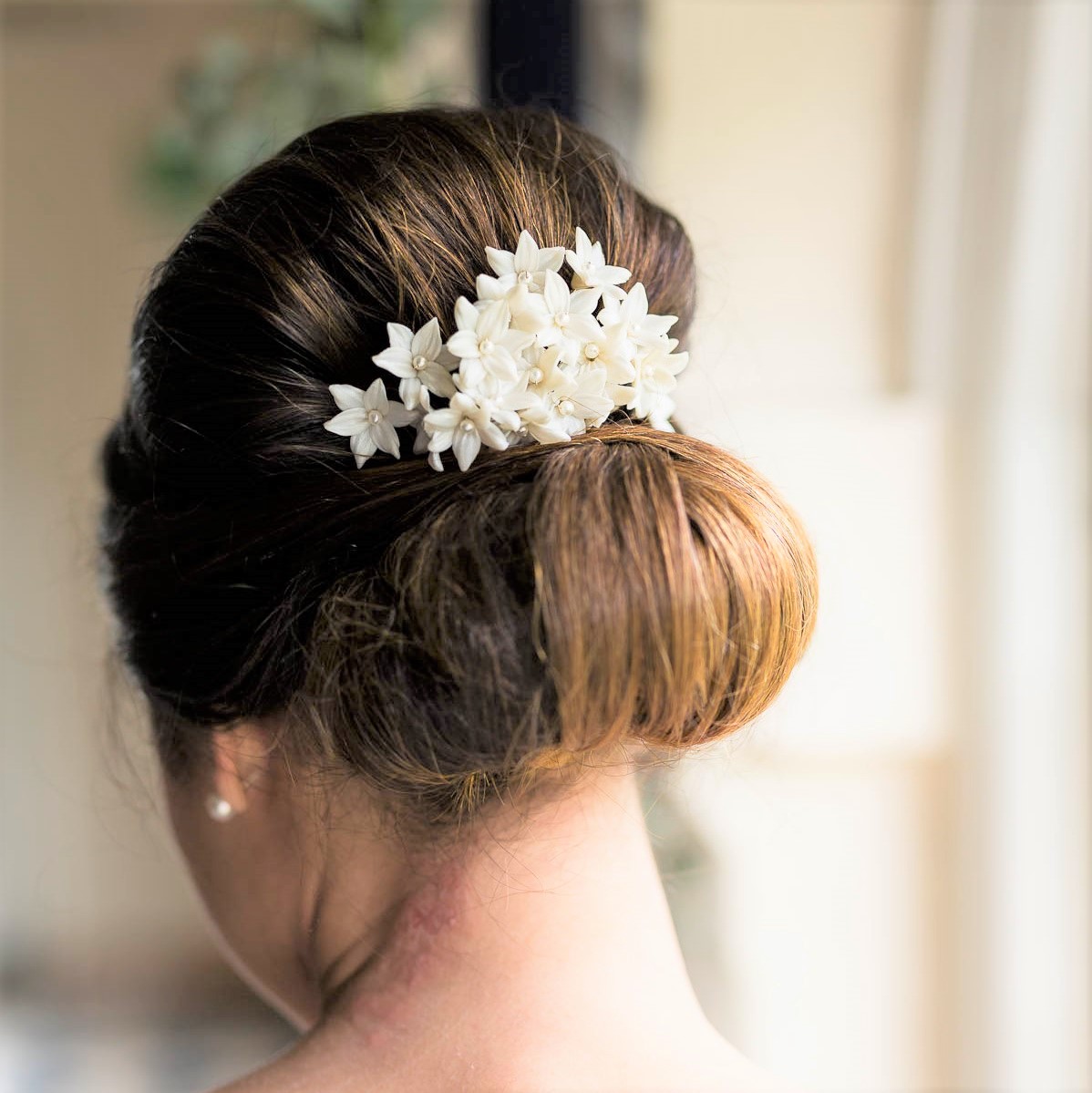Table Of Content

These practices highlight how mehndi has woven itself into the cultural fabric of various regions. Mehndi designs here often feature bold patterns and symbolic motifs that resonate with the region’s cultural heritage, offering a link to the past in a contemporary context. In Indian traditions, mehndi represents the bond between a husband and wife, while in Middle Eastern cultures, it signifies protection and good luck. The intricate designs also tell stories, convey blessings, and serve as a form of self-expression. Trade routes that crisscrossed continents facilitated the dissemination of not only goods but also cultural practices, including mehndi. The interaction between various civilizations led to the exchange of artistic ideas and techniques, resulting in the evolution of mehndi designs that bore the imprints of multiple cultures.
Floral Artistry
Although this mehndi artwork is full of meaning, it's the leafy fingertips that stand out the most. The flourishing vines continue on the backs of the hands and fingers to further accentuate the wedding and engagement rings. Along with traditional henna motifs, she added her name and her groom's name to her wrists in a bracelet-like fashion. The Mehndi ceremony is a time-honored tradition that has been passed down through generations. It is a way for the bride to connect with her cultural roots and embrace her heritage. The designs and patterns used in Mehndi are influenced by various regional traditions, making each bridal Mehndi unique and special.
Top Bridesmaids Outfit Inspo For an Indian Wedding
The hands are believed to be the gateway to the soul, and adorning them with henna is seen as a way to invite blessings and good fortune into one's life. The art of mehndi has influenced a wide range of contemporary art forms, from body art to fashion and beyond. Tattoo artists often draw inspiration from mehndi’s intricate patterns, translating them into permanent ink designs.
Easy Application, Captivating Designs - Embrace the Beauty of Our Tattoos Today!
In Indian culture, the bride's hands and feet are adorned with intricate henna designs before the wedding ceremony. This tradition is believed to bring good luck and blessings to the couple as they embark on their new journey together. The designs often include symbols and motifs that represent love, fertility, and prosperity. In conclusion, mehndi is an art form that holds great cultural significance in India. It is not just a form of body decoration but a way to celebrate special occasions and express one's creativity. Whether it is for weddings, festivals, or personal expression, mehndi has become an integral part of Indian culture and a beautiful way to adorn oneself.
Mesopotamia: Evidence of Henna Use in Adornment
People decorate their hands and feet with henna designs to celebrate the triumph of light over darkness and to welcome prosperity and good fortune into their lives. The designs for Diwali often feature intricate patterns and motifs inspired by traditional Indian art and mythology. Indian Mehndi art is not only a form of body art but also an important part of Indian culture and traditions. It is often applied during weddings, festivals, and other special occasions as a way to celebrate and adorn the body. The designs and patterns used in Mehndi art are often passed down from generation to generation, and they hold deep cultural and symbolic significance. The look of a henna tattoo is one that's quite recognizable, especially compared to traditional black and colored ink tattoos.
Arabic mehndi designs
In conclusion, the art of Indian henna tattoos, or Mehndi, has evolved in recent years to include contemporary designs and trends. These designs offer a modern twist to the traditional art form, incorporating elements of minimalism, floral motifs, and Western influences. The occasions on which Mehndi is applied have also expanded beyond weddings and religious festivals, reflecting its growing popularity as a form of body art. Despite these changes, the cultural significance of Mehndi remains strong, symbolizing good luck, prosperity, and cultural heritage. Whether traditional or contemporary, Mehndi continues to captivate and inspire people around the world. In conclusion, traditional Indian henna tattoo designs are a beautiful and intricate art form that holds deep cultural significance.
These designs, with their intricate patterns and motifs, are a reflection of India's diverse culture. They are not just limited to special occasions but are also a way to express one's identity and connect with one's heritage. Whether it is a wedding, festival, or any other celebration, henna tattoos are an integral part of Indian traditions and celebrations.
Raksha Bandhan 2023: Beautiful Mehendi designs to celebrate Rakhi - Hindustan Times
Raksha Bandhan 2023: Beautiful Mehendi designs to celebrate Rakhi.
Posted: Tue, 29 Aug 2023 07:00:00 GMT [source]
Enchanting Wedding Decor From Varun Dhawan and Natasha…
Originating in ancient India, this form of temporary body adornment has become an integral part of Indian culture and is now celebrated worldwide. The intricate designs created with henna paste not only serve as a form of self-expression but also hold deep cultural significance. In countries like India, Pakistan, and Bangladesh, mehndi is an integral part of cultural celebrations, especially weddings. The intricate patterns that adorn the hands and feet of brides hold deep symbolism, signifying the bond between husband and wife.
Hartalika Teej 2023: 10 Beautiful Henna Ideas to Try on - India.com
Hartalika Teej 2023: 10 Beautiful Henna Ideas to Try on.
Posted: Sun, 17 Sep 2023 07:00:00 GMT [source]
Unveiling the Beauty of Indian Mehndi Art: Henna, Rituals, and Intricate Designs

The paisley design is characterized by its curved shape and intricate detailing, making it a versatile and popular choice for Mehndi artists. The use of fine lines, curves, and dots became common, and the designs started to incorporate elements from nature, such as flowers, leaves, and birds. Mehndi artists also began experimenting with different techniques, such as shading and layering, to create depth and dimension in their designs.
Savla explains that henna is a crucial part of many Indian celebrations, including Diwali, engagements, and weddings. The henna itself is a temporary dye that has gained popularity for its beauty, but among Indian culture, it's considered more of a ritual. "There is often a dedicated event for the bridal parties to have their mehndi applied," says Savla.
In the colorful tapestry of Muslim festivals, Mehndi holds a cherished place, symbolizing joy, celebration, and tradition. From Eid al-Fitr to weddings and beyond, the intricate artistry of Mehndi designs adorns the hands ... The art of mehndi has evolved over the years, with new techniques and styles emerging. Today, there are various types of mehndi designs, ranging from traditional Indian patterns to modern and fusion designs. Artists experiment with different tools and materials to create unique and innovative designs.

Mehndi is seen as a way to enhance the beauty of the bride and symbolize the love and devotion between husband and wife. Mehndi is an integral part of Eid celebrations, with women and girls decorating their hands and feet with intricate designs. The designs often incorporate Arabic calligraphy and geometric patterns, reflecting the cultural influences of the region.
While mehndi’s roots lie in South Asia, its influence has reached beyond those borders. In Morocco, “khedma” is a form of mehndi that involves geometric and abstract designs. In the Arabian Peninsula, “khaleeji” mehndi features bold and thick patterns, often extending up the arms. In West Africa, henna is used to create intricate patterns for traditional ceremonies.
So, the next time you see someone with henna tattoos, take a moment to appreciate the artistry and cultural significance behind these intricate designs. In conclusion, mehndi is an integral part of Indian festivals, particularly Diwali, Eid, and Karva Chauth. Mehndi designs range from traditional to contemporary, reflecting the evolving nature of the art form.

No comments:
Post a Comment